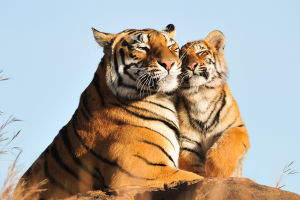Dragonflies' Low Flight
Dragonflies, with their iridescent wings and agile flight, are among nature's most captivating insects.
Known for their incredible speed and aerial acrobatics, these creatures often exhibit a unique behavior: flying low.
Observing a dragonfly skimming just above the ground or water surface may prompt curiosity about the reasons behind this behavior. Understanding why dragonflies fly low can reveal fascinating insights into their life cycle, predatory tactics, and environmental needs.
1. Hunting and Feeding
One of the primary reasons dragonflies fly low is to hunt for prey. Dragonflies are formidable predators, feeding on a diet primarily consisting of smaller insects like mosquitoes, flies, and gnats. Flying close to the ground or water allows them to spot and catch their prey more efficiently. Dragonflies have exceptionally sharp vision, with their large, multifaceted eyes giving them a nearly 360-degree field of view. By maneuvering close to their hunting grounds, they can quickly respond to the movements of their prey and make precise, agile strikes.
2. Reproduction and Mating Rituals
Dragonflies also exhibit low-flying behavior during their mating rituals. The mating process of dragonflies involves intricate aerial displays and synchronized movements. Female dragonflies often fly close to the water surface, where males will perform elaborate flight patterns to attract them. These low-level flights are crucial for the courtship process, as the males attempt to demonstrate their prowess and suitability as mates. After mating, females lay their eggs in or near water, ensuring that the next generation has a suitable habitat for development.
3. Environmental Factors
The flight patterns of dragonflies can also be influenced by environmental conditions. Dragonflies are ectothermic, meaning their body temperature is regulated by the surrounding environment. On cooler days, they may fly lower to benefit from the warmer microclimates near the ground or water surface. Additionally, flying low can help them avoid strong winds and turbulent air currents that might affect their stability and flight control.
4. Territorial Behavior
In addition to hunting and mating, flying low can be a sign of territorial behavior. Dragonflies are known for their territorial nature, particularly males that defend their chosen areas from intruding rivals. By patrolling the lower levels of their territory, they can assert dominance and deter other dragonflies from encroaching on their space. This low-level flight allows them to effectively monitor and protect their territory.
5. Navigational and Safety Strategies
Flying close to the ground can also serve as a navigational and safety strategy. For dragonflies, the lower altitude can provide a clearer view of potential hazards and obstacles. Additionally, being close to the ground or water can offer protection from aerial predators such as birds. This behavior allows them to maintain a safe and efficient flight path while remaining vigilant of their surroundings.
6. The Role of Habitat
The habitat in which dragonflies are found plays a significant role in their flying behavior. Dragonflies are commonly associated with aquatic environments, including ponds, lakes, and rivers. These habitats provide essential resources such as food, breeding grounds, and suitable conditions for larval development. In these environments, flying low allows dragonflies to stay close to their preferred habitats and resources.
Dragonflies flying low is a multifaceted behavior driven by various factors including hunting strategies, mating rituals, environmental conditions, territorial disputes, and habitat needs. By flying close to the ground or water surface, dragonflies can optimize their chances of survival and reproduction. Observing these incredible insects in their natural habitat offers a glimpse into the intricate and dynamic world of one of nature's most skilled aviators. Understanding the reasons behind their low-flying behavior enriches our appreciation of these fascinating creatures and their role in the ecosystem.


